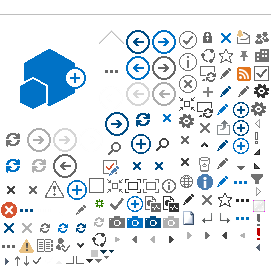After Hurricane Helene, it became apparent that few farmers in the disaster areas had crop insurance. Here’s how agents can highlight the benefits of this essential coverage.
The agriculture industry continues to be the bedrock of the American economy. However, it can be easily impacted by fluctuations in weather and financial markets. Even in the face of numerous, daily challenges—from catastrophic weather events to pests and disease—that threaten both their livelihoods and the resiliency of their farming operations, many farmers are unaware of all the benefits that crop insurance offers.
This fact bubbled to the surface in October 2024. As North Carolina calculated the cost of Hurricane Helene, it became apparent that few farmers in the disaster areas had crop insurance, resulting in Governor Roy Cooper requesting $225 million for grants to farmers for uninsured losses.
Understanding the importance of crop insurance is imperative to the continued success of the agricultural community, as well as the American economy.
“Farmers are responsible for feeding, fueling and clothing the world," says Dave DeCapp, senior vice president, marketing, Farmers Mutual Hail Insurance. “Crop insurance has become the cornerstone of the farm safety net and provides American farmers with access to an affordable risk management tool. With farmers able to continue producing even in difficult years, America's food safety net is protected."
However, crop insurance products can be complex. Farmers face making increasingly difficult, complicated decisions when it comes to choosing the coverage they may need, which is where an independent agent can help.
“There are significantly more options for farmers today than there were just five years ago," says Dale Perry, divisional president, Great American Insurance Group – Crop Division. “An agent who comes to the table with a new perspective and can discuss multiple options will be noticed and valued by growers."
While there are various coverage options for specialty crops, farmers have access to two main types of coverages: multi-peril crop insurance and crop-hail insurance. Some of their distinguishing features are:
- Crop-hail insurance. A privately provided insurance policy that offers protection against crop losses caused by perils such as hail, fire, lightning, wind and damage to crops during transit. It is often used to protect against crop losses that are not insured under the federal program, making it an attractive option for farmers looking to protect high-yield crops. Prices for these policies are set by individual insurance companies.
- Multi-peril crop insurance. A government-subsidized policy that looks to provide affordable crop insurance to farmers, helping to maintain the viability of farming and ensuring the stability of the nation's food supply. Multi-peril crop insurance enables farmers to be indemnified after catastrophic weather events occur, providing the financial support needed for farms to remain sustainable. Perils covered include drought, natural disasters, excessive moisture, deep freezes, hot weather and disease. Unlike crop-hail policies, industry-wide premium rates are set for all insurable crops at one price.
“Our advice for agents is to become knowledgeable about the variety of federal and private products available to customers and prospective customers to truly be a trusted risk management advisor," DeCapp says. “Understand the risks specific to your geographic area so you can tailor risk management plans to each individual operation."
Agents play an important role in highlighting the importance and the benefits of purchasing crop insurance. “It is important that agents continue to educate their customers on the value of the crop insurance policy they are buying," Perry says. “Too often, growers focus on the cost but forget about the benefits of the coverage they are buying."
Helping a client choose the right type of coverage for their operation goes beyond the simple consideration of extreme weather events. For example, “for farmers, with farm expenses remaining high and grain prices trending down over the last several years, crop insurance is a critical tool to confidently market their product and protect their livelihood," DeCapp says.
Agents can assist their crop clients in evaluating coverage options, reviewing important dates and establishing coverage, as well as guiding them through the claims process.
Olivia Overman is IA content editor.
